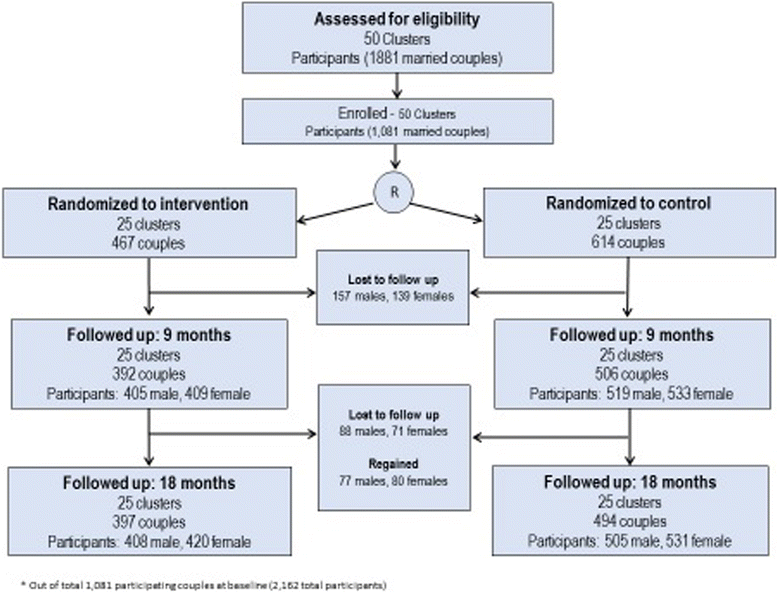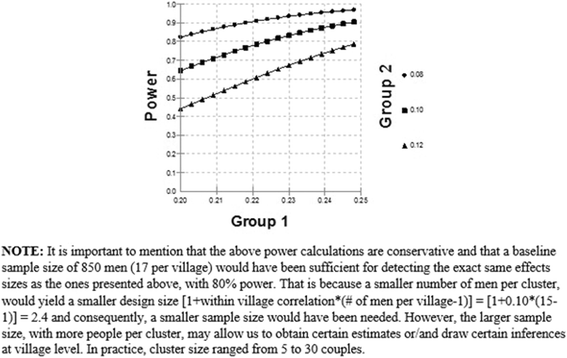CHARM, a gender equity and family planning intervention for men and couples in rural India: protocol for the cluster randomized controlled trial evaluation
- PMID: 26897656
- PMCID: PMC4761168
- DOI: 10.1186/s12978-016-0122-3
CHARM, a gender equity and family planning intervention for men and couples in rural India: protocol for the cluster randomized controlled trial evaluation
Abstract
Background: Globally, 41% of all pregnancies are unintended, increasing risk for unsafe abortion, miscarriage and maternal and child morbidities and mortality. One in four pregnancies in India (3.3 million pregnancies, annually) are unintended; 2/3 of these occur in the context of no modern contraceptive use. In addition, no contraceptive use until desired number and sex composition of children is achieved remains a norm in India. Research shows that globally and in India, the youngest and most newly married wives are least likely to use contraception and most likely to report husband's exclusive family planning decision-making control, suggesting that male engagement and family planning support is important for this group. Thus, the Counseling Husbands to Achieve Reproductive Health and Marital Equity (CHARM) intervention was developed in recognition of the need for more male engagement family planning models that include gender equity counseling and focus on spacing contraception use in rural India.
Methods/design: For this study, a multi-session intervention delivered to men but inclusive of their wives was developed and evaluated as a two-armed cluster randomized controlled design study conducted across 50 mapped clusters in rural Maharashtra, India. Eligible rural young husbands and their wives (N = 1081) participated in a three session gender-equity focused family planning program delivered to the men (Sessions 1 and 2) and their wives (Session 3) by village health providers in rural India. Survey assessments were conducted at baseline and 9&18 month follow-ups with eligible men and their wives, and pregnancy tests were obtained from wives at baseline and 18-month follow-up. Additional in-depth understanding of how intervention impact occurred was assessed via in-depth interviews at 18 month follow-up with VHPs and a subsample of couples (n = 50, 2 couples per intervention cluster). Process evaluation was conducted to collect feedback from husbands, wives, and VHPs on program quality and to ascertain whether program elements were implemented according to curriculum protocols. Fidelity to intervention protocol was assessed via review of clinical records.
Discussion: All study procedures were completed in February 2015. Findings from this work offer important contributions to the growing field of male engagement in family planning, globally.
Trial registration: ClinicalTrial.gov, NCT01593943.
Figures
References
-
- National Family Health Survey (NFHS-3), 2005–06: India: Volume I. Mumbai, IIPS: International Institute for Population Sciences (IIPS) and Macro International; 2007.
-
- Bradley SEK, Croft TN, Rutstein SO. The impact of contraceptive failure on unintended births and induced abortions: estimates and strategies for reduction: DHS analytical studies 22. Calverton, Maryland: USA United States Agency for International Development (USAID); 2011.
Publication types
MeSH terms
Associated data
Grants and funding
LinkOut - more resources
Full Text Sources
Other Literature Sources
Medical






